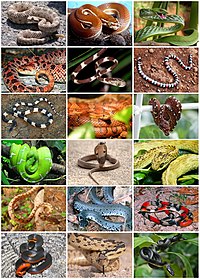
Photo from wikipedia
Questing behavior and host associations of immature blacklegged ticks, Ixodes scapularis Say, from the southeastern United States are known to differ from those in the north. To elucidate these relationships… Click to show full abstract
Questing behavior and host associations of immature blacklegged ticks, Ixodes scapularis Say, from the southeastern United States are known to differ from those in the north. To elucidate these relationships we describe host associations of larval and nymphal I. scapularis from 8 lizard species sampled from 5 sites in the southeastern U.S. Larvae and nymphs attached in greater numbers to larger lizards than to smaller lizards, with differential levels of attachment to different lizard species. Blacklegged ticks are generally attached to skinks of the genus Plestiodon in greater numbers per unit lizard weight than to anoles (Anolis) or fence lizards (Sceloporus). The broad-headed skink, Plestiodon laticeps (Schneider), was a particularly important host for immature I. scapularis in our study and in several previous studies of tick-host associations in the southeast. Blacklegged ticks show selective attachment to Plestiodon lizard hosts in the southeast, but whether this results from behavioral host preferences or from ecological factors such as timing or microhabitat distributions of tick questing and host activity remains to be determined.
Journal Title: Journal of medical entomology
Year Published: 2021
Link to full text (if available)
Share on Social Media: Sign Up to like & get
recommendations!